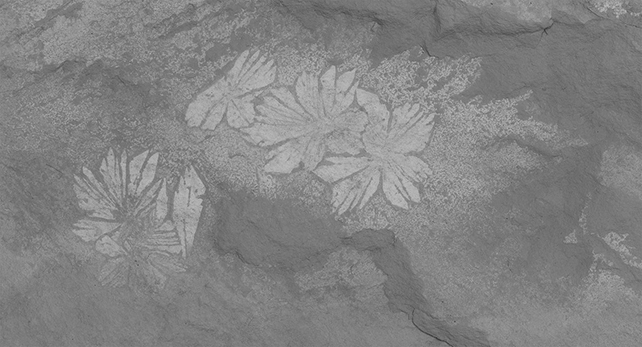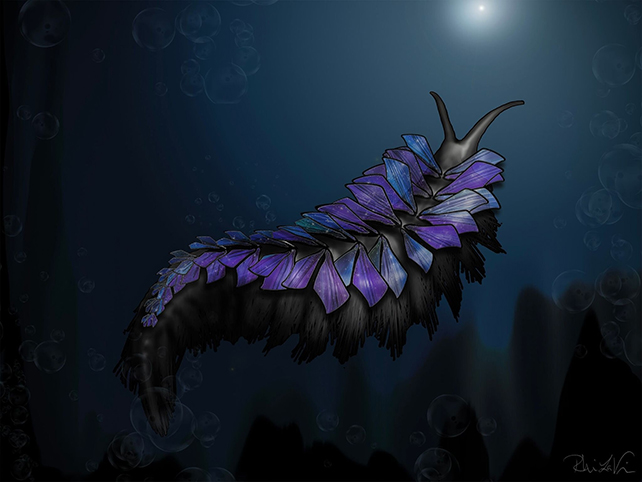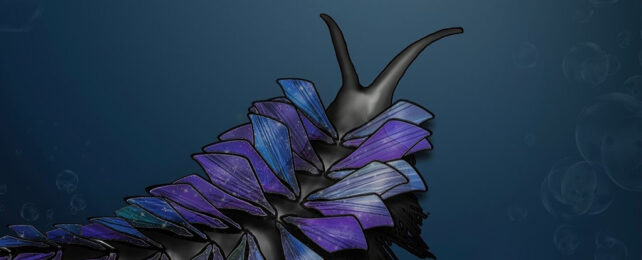The Dune books (and subsequent movies) are some of the most epic in all of sci-fi, and the iconic Shai-Hulid sandworms from Dune have now inspired the naming of a new species of ancient sea worm, the Shaihuludia shurikeni.
The discovery was made in a geologic formation crossing northern Utah and southern Idaho, well known for its abundance of Cambrian fossils dating back around 505 million years ago.
The worm – described by a research team from the US and Germany – is much smaller than the Dune variety, small enough to easily fit into the palm of your hand, and notable for the star-shaped chaeta (stiff bristles) on its back.

The radial blade shapes left behind in the rock meant that experts were initially unsure about what exactly it was that they'd discovered – after some careful analysis, researchers realized that what they were looking at was an animal and not a mineral.
"The way that the fossil is preserved is also of particular interest, because most of the soft tissue is preserved as an iron oxide blob, suggesting the animal died and was decomposing for a while before it was fossilized," says geobiologist Julien Kimmig, from the State Museum of Natural History in Germany.
The team used a variety of techniques to better determine what the discovery was, including scanning electron microscopy and energy-dispersive X-ray spectrometry – to determine the structure and chemical composition of what left the fossil behind, as well as revealing more about the fossilization process.

The newly discovered creature is categorized as an annelid, or segmented worm. As for naming it, Shai-Hulud is the Fremen people's name for the fictitious sandworms on the planet Arrakis in Frank Herbert's Dune, and "shuriken" is the Japanese word for throwing star.
Before now, only a single species of annelid has been found in this Spence Shale Lagerstätte site, described by the researchers as a treasure trove of fossilized remains. That makes it important for mapping out how the region might have looked some half a billion years ago.
Indeed, the new study helped the researchers reclassify another fossil from the same area. Back in the Cambrian, marine ecosystems in this part of North America would've been dominated by trilobites, brachiopods, mollusks, and early arthropods.
"It's very cool to think about our planet as a record of history and all of the different environments that have happened over billions of years, all on the same ground we stand on," says paleobiologist Rhiannon LaVine, from the University of Kansas in the US.
"We've had alien worlds beneath our feet."
The research has been published in Historical Biology.
